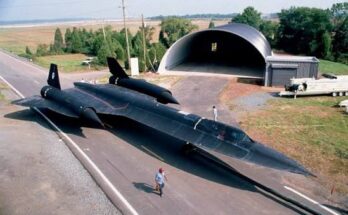
Tragic Mid-Air Collision at Dallas Airshow Leaves Six Dead
A tragic accident occurred at a Dallas airshow when two World War II-era planes collided mid-air, resulting in the deaths of six people. The horrifying crash took place during the Wings Over Dallas Airshow, an event designed to honor military aviation history. The incident has left aviation enthusiasts and the broader community in shock, prompting investigations into what went wrong.
The Incident: A Shocking Collision in the Sky
The Wings Over Dallas Airshow, held at Dallas Executive Airport, was meant to be a celebration of historic aircraft and military aviation. Spectators gathered to witness breathtaking aerial maneuvers and performances showcasing vintage warplanes from the World War II era. However, what was supposed to be a day of excitement turned into a nightmare.
During one of the scheduled performances, two aircraft—a Boeing B-17 Flying Fortress bomber and a Bell P-63 Kingcobra fighter—were executing a demonstration when they tragically collided in mid-air. The impact was catastrophic, sending debris flying across the sky before both planes plummeted to the ground. The crash was caught on video by stunned spectators, showing the moment of impact and the ensuing explosion.

Emergency response teams rushed to the scene, but unfortunately, all six crew members aboard the two planes perished. There were no reports of injuries on the ground, as the crash occurred away from spectator areas.
Understanding the Aircraft Involved
The two planes involved in the crash were iconic aircraft from World War II:
• Boeing B-17 Flying Fortress – This four-engine heavy bomber was one of the most famous aircraft of World War II. Known for its durability and firepower, the B-17 played a crucial role in strategic bombing missions. The aircraft that crashed in Dallas was part of the Commemorative Air Force (CAF) fleet, which preserves historic warbirds for educational and memorial purposes.
• Bell P-63 Kingcobra – A lesser-known but formidable fighter aircraft, the P-63 Kingcobra was developed by Bell Aircraft and primarily used by the Soviet Union under the Lend-Lease program during World War II. Unlike the more famous P-51 Mustang, the P-63 was not widely used by U.S. forces but remains a cherished aircraft among aviation history enthusiasts.
Both planes were maintained by the CAF, an organization dedicated to keeping historic military aircraft operational for airshows and educational displays.
Investigating the Cause of the Crash
The National Transportation Safety Board (NTSB) and the Federal Aviation Administration (FAA) have launched a full investigation into the crash. Early reports suggest that the collision may have been the result of a miscalculated maneuver or miscommunication between the pilots during the airshow performance.
Some key factors investigators will examine include:
• Flight Path Coordination: Airshow performances are carefully choreographed, but slight miscalculations in altitude or speed can lead to dangerous situations.
• Pilot Experience and Training: While the pilots were highly trained and experienced in flying vintage aircraft, the complexity of formation flying always carries risks.
• Aircraft Maintenance Records: Investigators will review the maintenance history of both planes to rule out mechanical failures that could have contributed to the crash.
• Weather Conditions: Although weather was reported to be clear at the time of the crash, any potential environmental factors will be examined.
The NTSB has stated that a preliminary report will be released in the coming weeks, but a full investigation could take several months to complete.
Reactions from the Aviation Community
The aviation community and the families of those involved are mourning the loss of the six individuals who lost their lives in the crash. Many of them were experienced pilots and crew members who dedicated their lives to preserving aviation history.
Hank Coates, the CEO of the Commemorative Air Force, expressed deep sorrow over the incident, emphasizing that safety is always a priority in airshows. He also noted that the pilots involved were volunteers who had extensive experience flying these historic planes.
Aviation experts and enthusiasts have also taken to social media to express their condolences and reflect on the risks associated with flying vintage aircraft. While airshows are meant to be a celebration of aviation history, incidents like this highlight the inherent dangers of operating decades-old planes, even under the most controlled conditions.

Airshow Safety: Can Tragedies Like This Be Prevented?
While airshows are thrilling events that allow spectators to witness history in action, they come with risks. The challenge of flying older aircraft, combined with high-speed maneuvers and close formations, creates a delicate balance between excitement and danger.
Following this tragedy, aviation safety officials may consider implementing stricter regulations for future airshows, including:
• More stringent pre-show flight planning and coordination
• Increased oversight of flight maneuvers to minimize risk
• Potential restrictions on certain types of performances involving multiple aircraft
Despite these risks, airshows continue to be a vital part of aviation culture, providing education and honoring the sacrifices of military aviators.
Conclusion: A Tragic Loss for Aviation History
The mid-air collision at the Wings Over Dallas Airshow is a heartbreaking reminder of the risks involved in preserving and showcasing historic aircraft. As investigations continue, the aviation world mourns the loss of the six crew members who perished in the accident.
He
While airshows bring joy to millions, this tragedy serves as a sobering moment to reflect on the importance of safety in aviation. As officials work to determine the cause of the crash, the memories of those lost will remain in the hearts of their loved ones and the aviation community forever.


